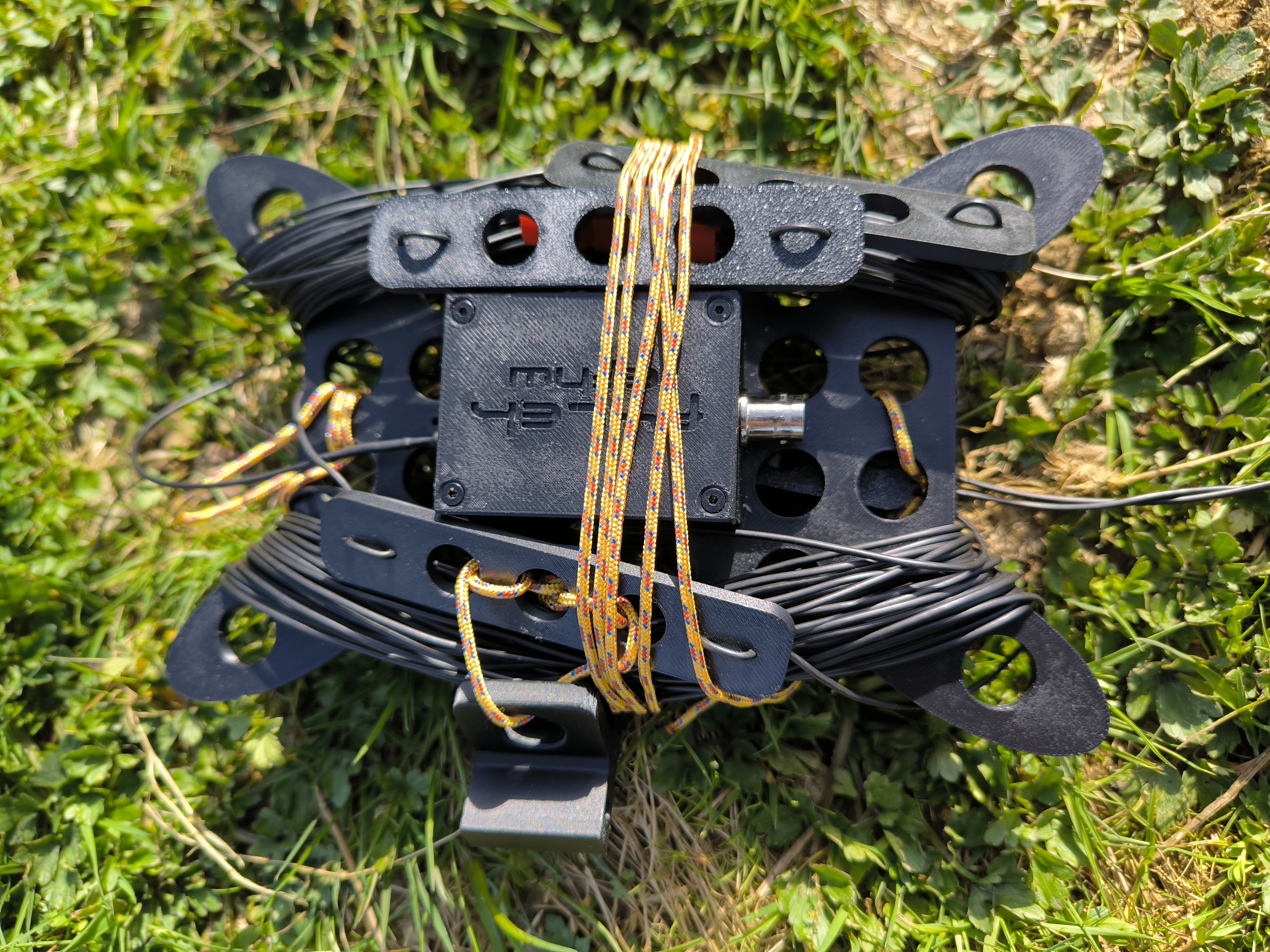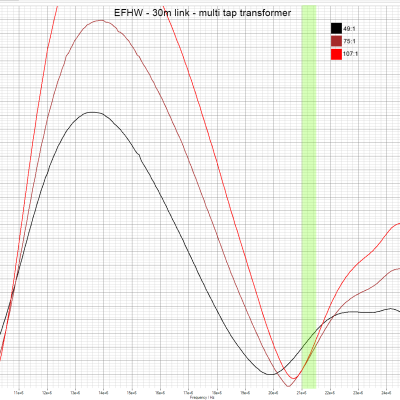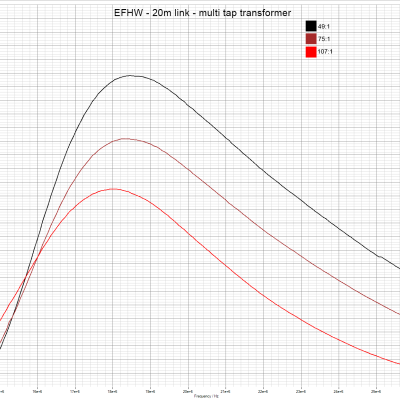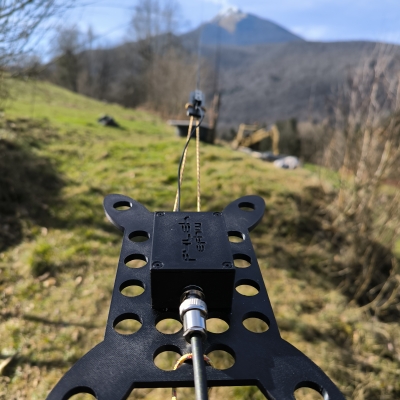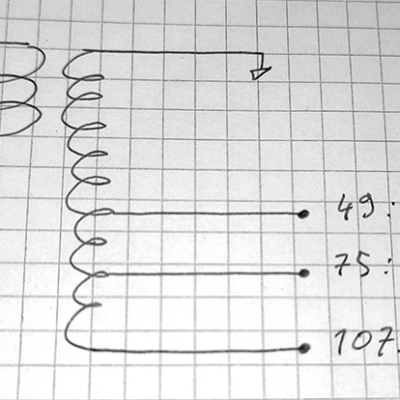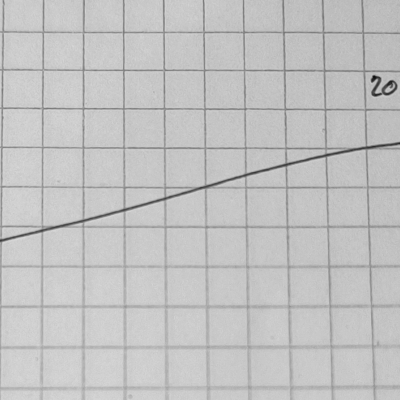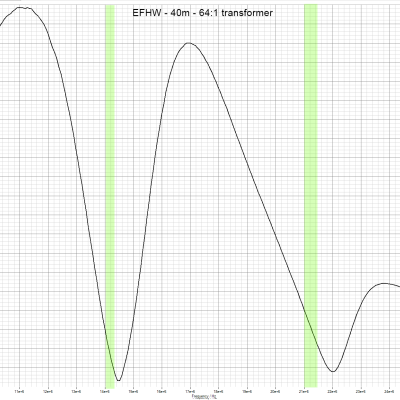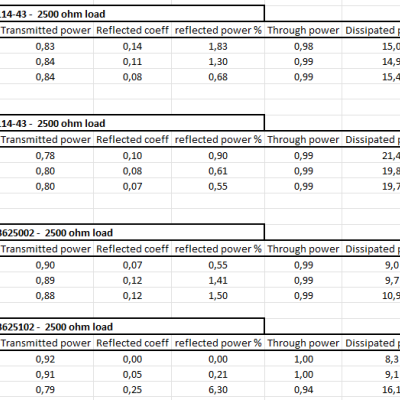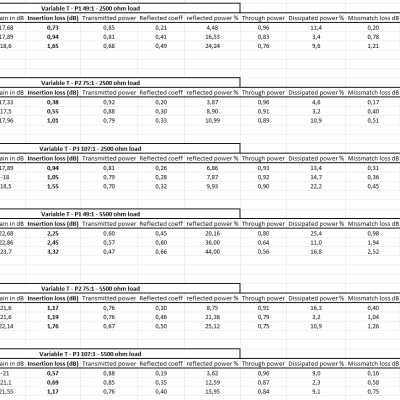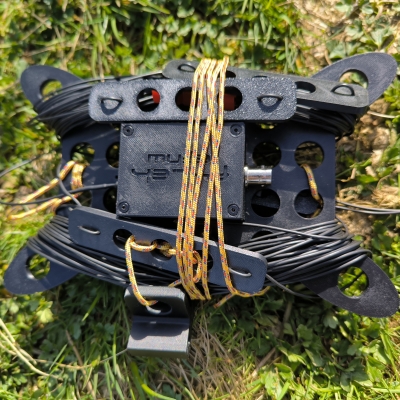I was working on 3D-printed antenna winders for my EFHW when I set up the antenna in the garden. While analyzing the SWR curve with my NanoVNA, I was intrigued by the SWR reading on 40m, almost 2:1 at its minimum. This was unusual because I had never experienced such behavior while operating in the mountains (rocky summits).
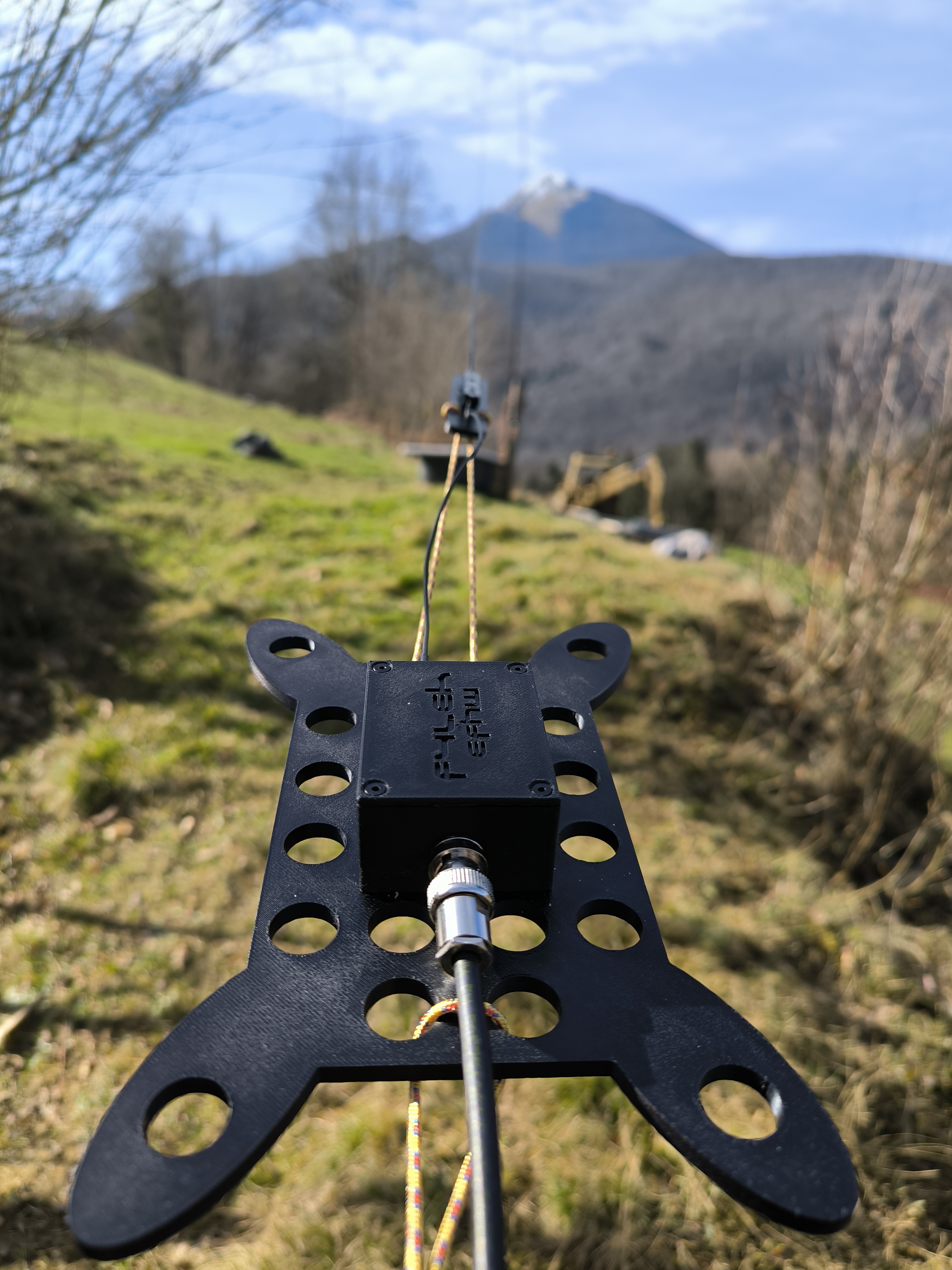
Suspecting a ground effect, I decided to measure the impedance of the antenna without the transformer. To my surprise, it was around 6000 Ω! I then moved the antenna to different locations in the garden, but the impedance remained in the range of 5500 to 6500 Ω. This confirmed that the issue was likely due to the interaction with the soil composition and moisture levels. On the 20m band, the impedance is only about half, 3000 ohm. An ideal scenario would be to have multiple transformers to match those very variable impedances. However, it's not very pratical, especially for field radio.
The project: a Variable Ratio Transformer
Instead of making multiple transformers, I designed a single transformer with 3 taps to provide 3 different transformation ratios:
- P1: Primary to 21 turns → (21/3) ratio → (21/3)² = 49:1 → Matches ~2450 Ω
- P2: Primary to 26 turns → (26/3) ratio → (26/3)² = 75:1 → Matches ~3750 Ω
- P3: Primary to 31 turns → (31/3) ratio → (31/3)² = 107:1 → Matches ~5350 Ω
It should be able to cover large variety of impedances.
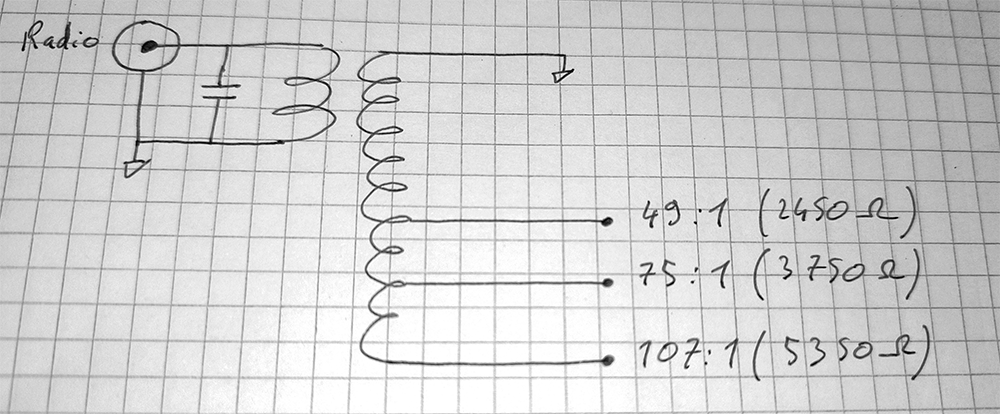
The setup
To evaluate the transformers, I set up the following configuration:
- Antenna: A ~20m long EFHW, with the apex at 5.5m height and both ends at 1m above ground (inverted V configuration, angle of approximately 125°). A link at ~10m (used as a sloper on 20 and 10m bands) and a link at 14.5m (30m band).
- Coaxial Feedline: 3m of RG58 coax between the transformer and the VNA.
- Common Mode Suppression: A choke was placed before the VNA (I also tested without it, with no noticeable difference).

Results and discussions
Reference: 64:1 transformer

As a reference point, we start by examinating a classic SWR curve from an EFHW antenna with a usual teansformer (such as 64:1). We can immediately notice that they are not ideal across multiple bands. If the antenna is cut to resonate at 7.1 MHz, it ends up being slightly too short for 14 MHz and clearly too short for 21 MHz. This behavior can be attributed to end effects, which occur due to the high-voltage nature of the EFHW antenna. The last portion of the wire interacts with its surroundings (insulator, ground proximity, nearby objects), introducing stray capacitance. This effectively shortens the electrical length of the antenna, shifting its resonant frequencies higher than expected. Additionally, the impedance transformer itself introduces some inductance and capacitance, further modifying the effective resonance points. Because of these effects, it is common practice to compromise when cutting an EFHW antenna. Many operators tune it to a preferred section of a band (e.g., the CW portion or the middle of a preferred band). A coil can also be used to add inductance and adress this problem.
The variable transformer: full lenght antenna (20m long) inverted V configuration
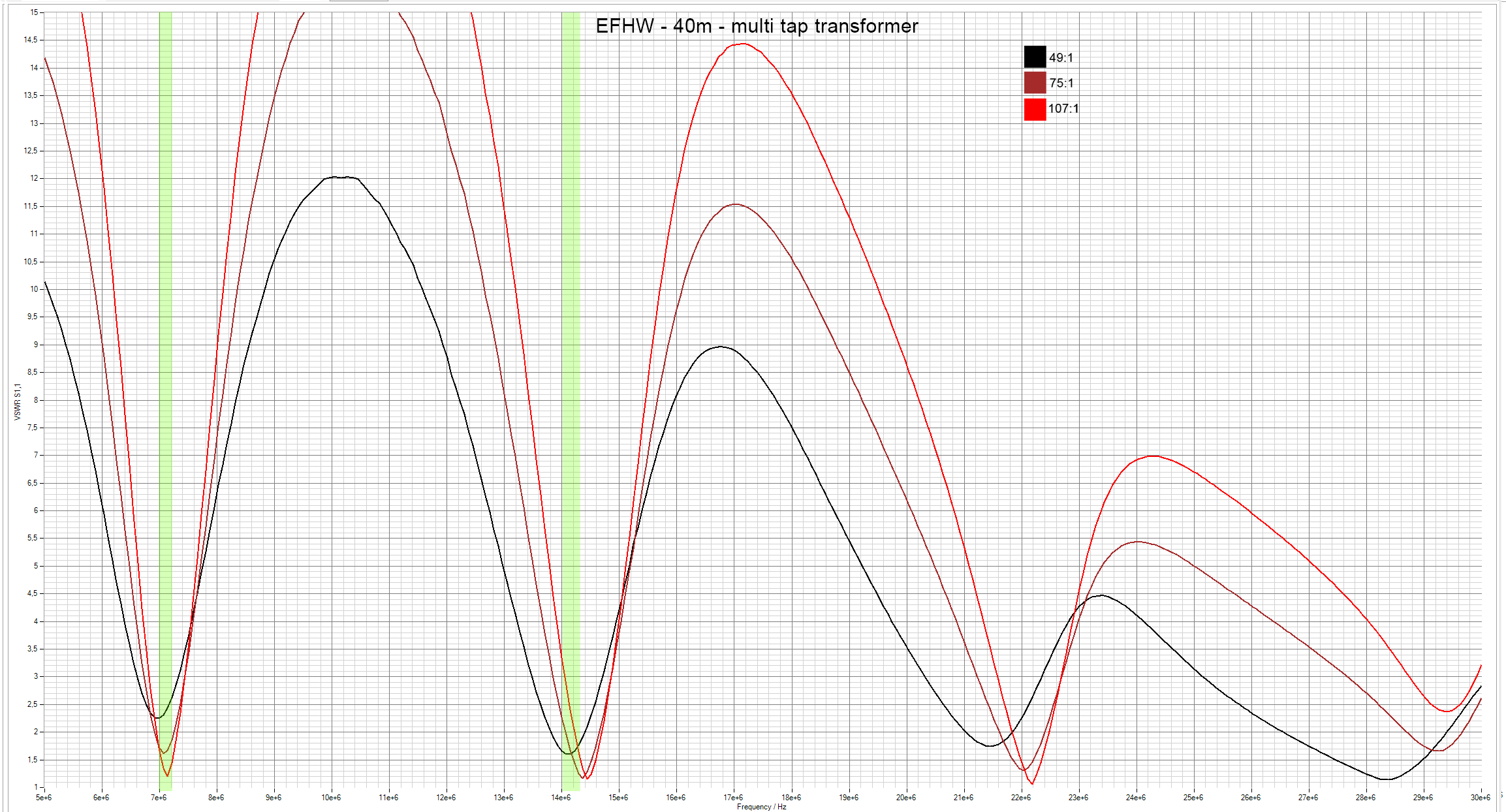
The variable transformer: half wave antenna (14.5m long) inverted V configuration
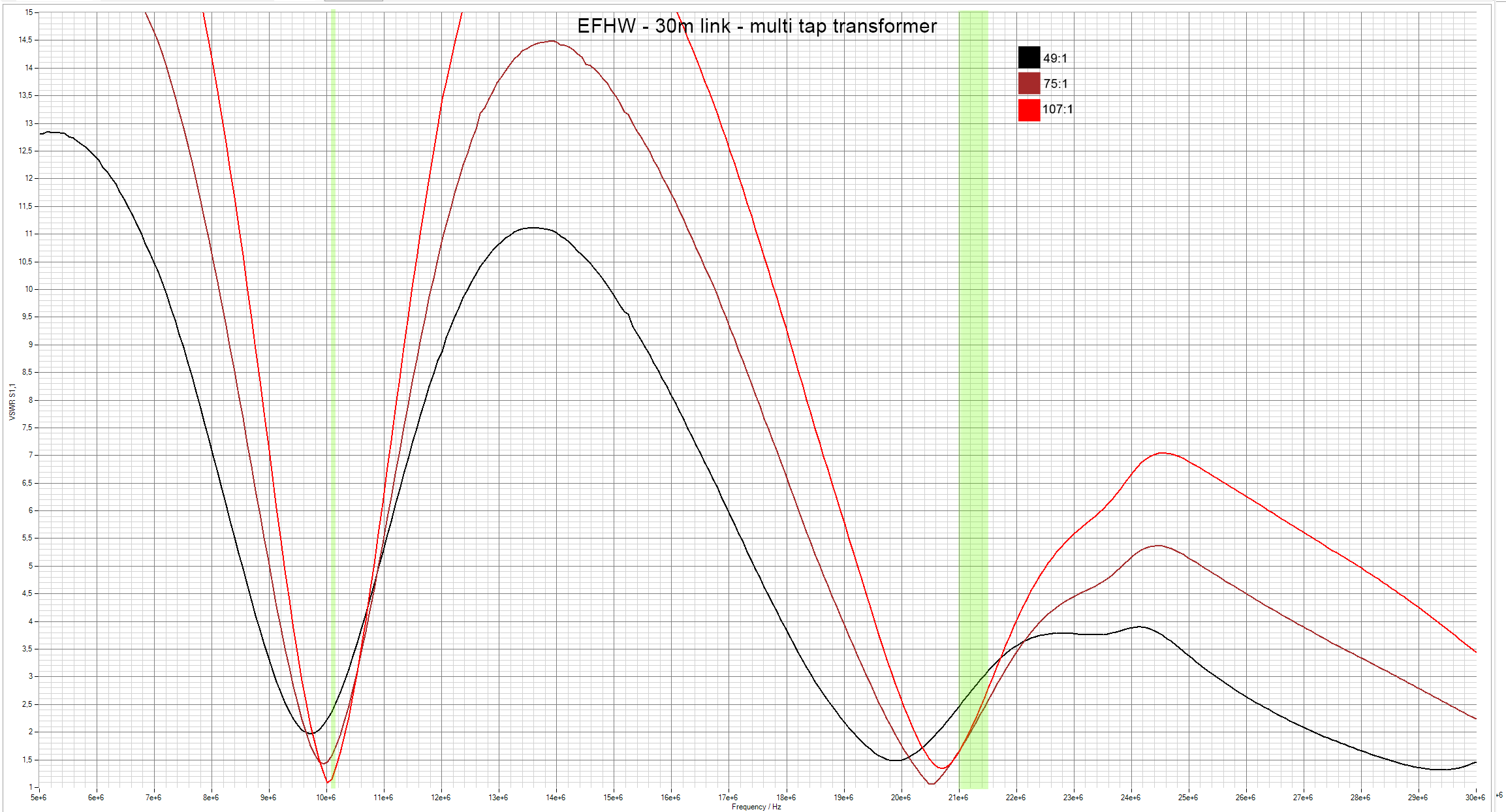
The variable transformer: half wave antenna (10m long) sloper configuration
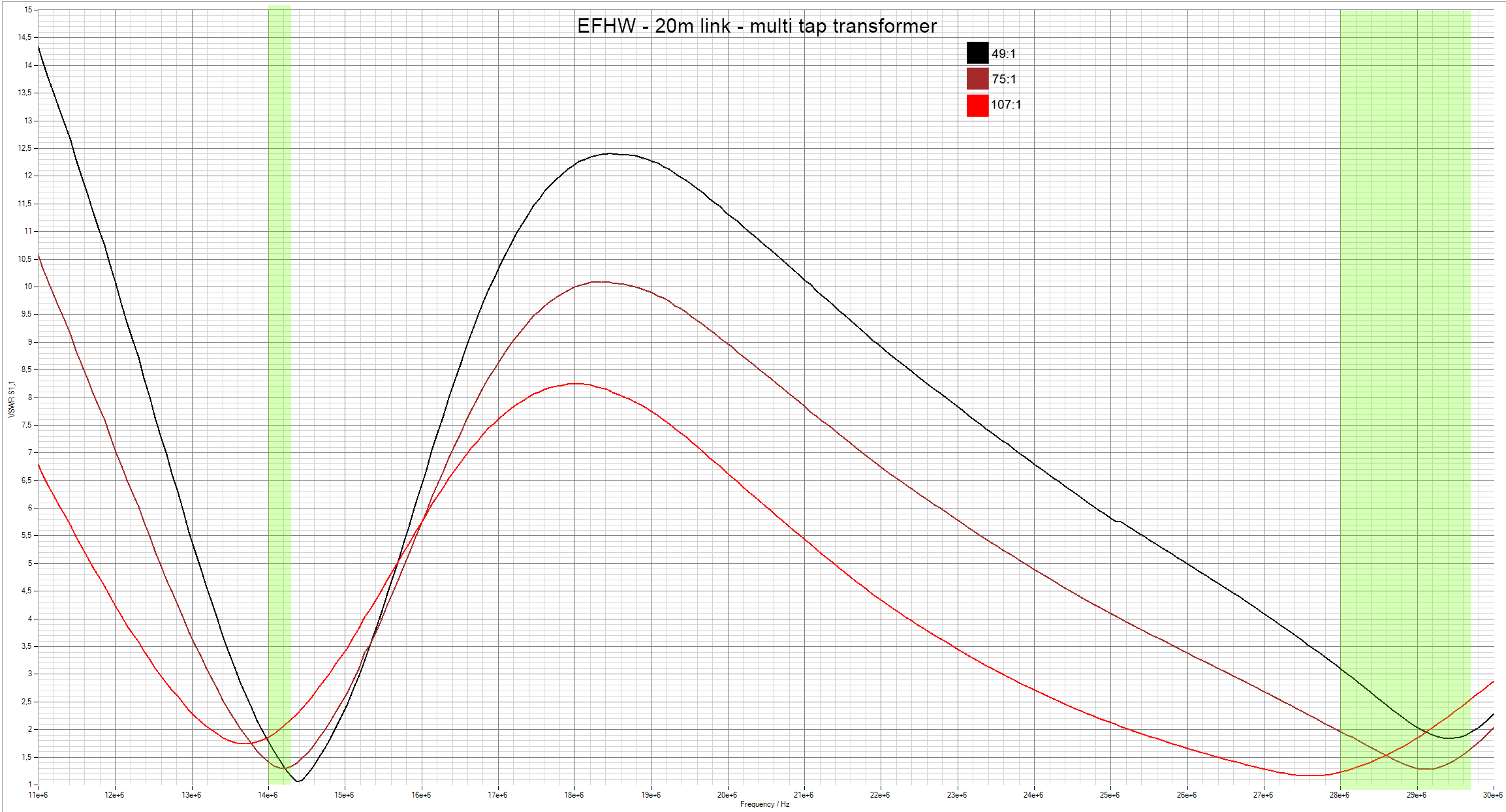
- Tuning on 40m band (7.1MHz) is now done using the full lenght of the antenna and selecting 107:1 transformer on the match box. SWR < 1.5 accross the whole band.
- Tuning on 30m band (10.1 MHz) is now done using the 30m link and selecting 107:1 transformer on the match box. SWR < 1.3 accross the whole band.
- Tuning on 20m band (14.1 MHz) is now done using the 20m link and selecting 75:1 transformer on the match box. SWR < 1.4 accross the whole band. Similar results, but different radiation pattern, could be achieved using the full lenght of the antenna.
- Tuning on 15m band (21.1 MHz) is now done using the 30m link and selecting 75:1 transformer on the match box. 1.5 < SWR < 2.5 . Not ideal, but usable.
- Tuning on 10m band (28.5 MHz) is now done using the 20m link and selecting 75:1 or 107:1 transformer on the match box. SWR < 1.5 accross the whole band.
The results are promising. Not only does the ability to adjust the impedance transformation improve matching, but it also helps to fine-tune the resonance points to better align with the desired bands.
Efficiency tests
I reviewed and refined my VNA efficiency measurement protocol, ensuring:
- Characterization of the resistors according to frequency
- The same clean fixture for each measurement
- Short component leads (soldered)
- All measurements taken in a single session
I measured two different resistors (2500Ω and 5500Ω) for each transformer position. For comparison, I also tested four other transformers:
- A 49:1 and a 64:1, both based on an FT-114-43
- A 54:1 using another 2643625002 An unusual 2643625102 (equivalent in size to two stacked 2643625002)
All transformers had the same winding configuration: three turns on the primary, with wires neatly wound on one side of the toroid, using 0.4mm wire—except for the FT-114-43 transformers, which used 0.8mm wire.
Conclusions
- The SWR curves look good—7, 10, 14, and 28 MHz are available with low SWR across the entire band. 21 MHz is usable but may not be ideal. I need to test the setup on different ground conditions to ensure it is as versatile as it appears.
- Efficiency is excellent when the correct tap is used for the impedance it is designed for.
- The behavior of the taps is not equivalent to the same ratio in a standalone transformer. The unused turns and leads affect the entire system.
Additional considerations
To make this approach more practical, I designed and 3D-printed an all-in-one antenna winder and transformer case, integrating three banana connectors for quick antenna connection. This setup allows me to switch the matching ratio within seconds to better suit the operating band, providing greater flexibility in the field.
